The Thai New Year, or Songkran, has become watered down in many urban centers, writes author and photographer Jim Algie, as you can see from all the malls where Buddha images are set up to be rinsed by patrons who go through the blessing motions with little heart and no soul but it’s a different story in the boondocks.
My favorite place to usher in the Thai new year is in the northeast, preferably a small town. Those farming communities have not lost the original spirit or the fervor of the Thai new year festivities.
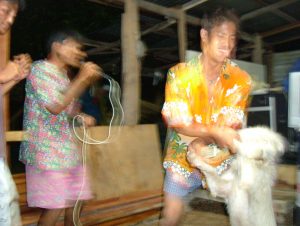
Even the camera was seeing triple at this drunken karaoke affair.
A few years ago I was out in a town in Korat which is no more than a flyspeck on any map of Thailand. A friend was visiting from Canada. I wanted to show him the real Thailand.
On our first morning there, I woke up around 9am to see him staggering drunkenly into the house. What happened? “Oh, I been drinking moonshine with Granny under her house since 6am.”
We had not even eaten breakfast yet and Tim was totally hammered.
The days start early out here. By the first cock’s crow the villagers are up and feasting on toads, lizards, insects, bats, and snakes before they make their way out to the rice paddies. In between harvests, they still get up early, the men to drink and gamble, the women to cook, wash and sew.
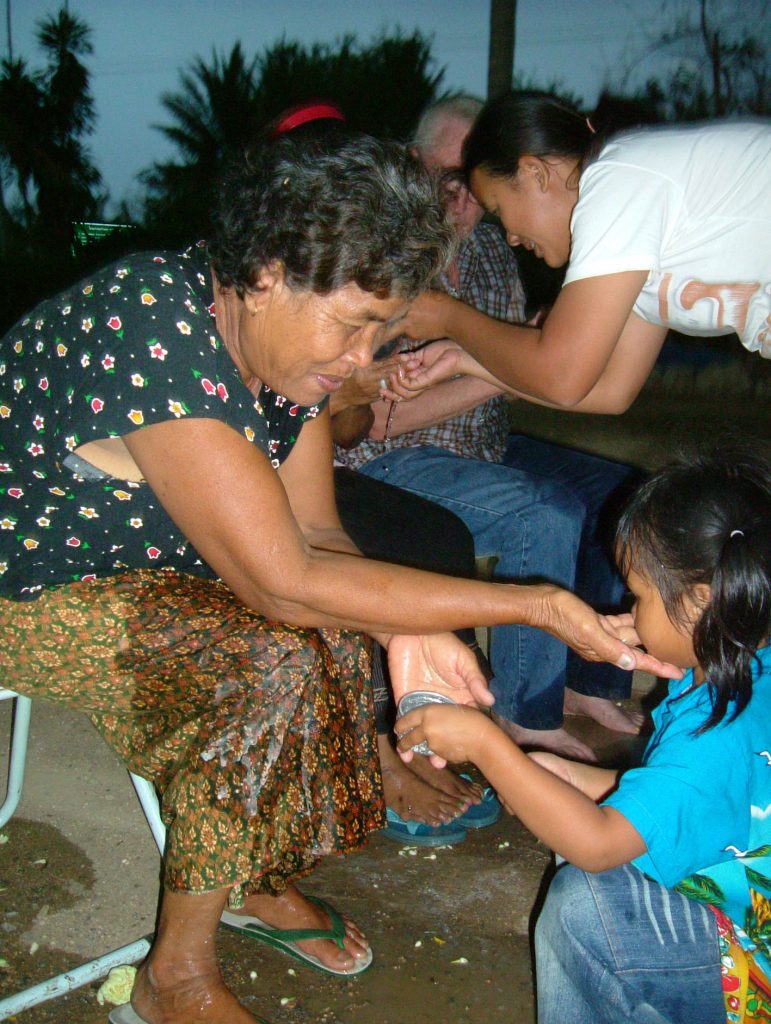
This water-pouring ritual binds the generations together.
ESCAPE FROM MENIAL DRUDGERY
Festivals are some of the few breaks from the grinding, hand-to-mouth poverty. Of these spectacles the Thai New Year is the biggest and jolliest.
Over the three days of Songkran there are temple fairs with live bands and circle dances, ceremonies to anoint Buddha images and pour water over the hands of elders to bless them, special family dinners and non-stop drinking.
You can’t book a tour of these places. There are no hotels, no guesthouses, no restaurants. Pretty much the only way to get out there is to hop a ride with a local friend or the traveling party of a Thai spouse. It helps to speak Thai, certainly, because there is not a lot of English spoken out in the boondocks.
If you can circumvent these obstacles, the payoff is enormous: you will meet some of the most generous and genuinely hospitable folks in the country while savoring a few slices of rural life served as raw and real as it gets.
This is the heart of the heartland and it pulsates with the country’s lifeblood of agrarian and animistic traditions.
You won’t see any of those fancy, multi-colored water cannons out here, no half-naked backpackers running amok, and no gangs of yahoos circling the streets in the back of pick-up tricks hurling water on everyone, to dampen the festive spirit.
Welcome to the real Thai heartland and a happy, tradition-soaked Songkran.
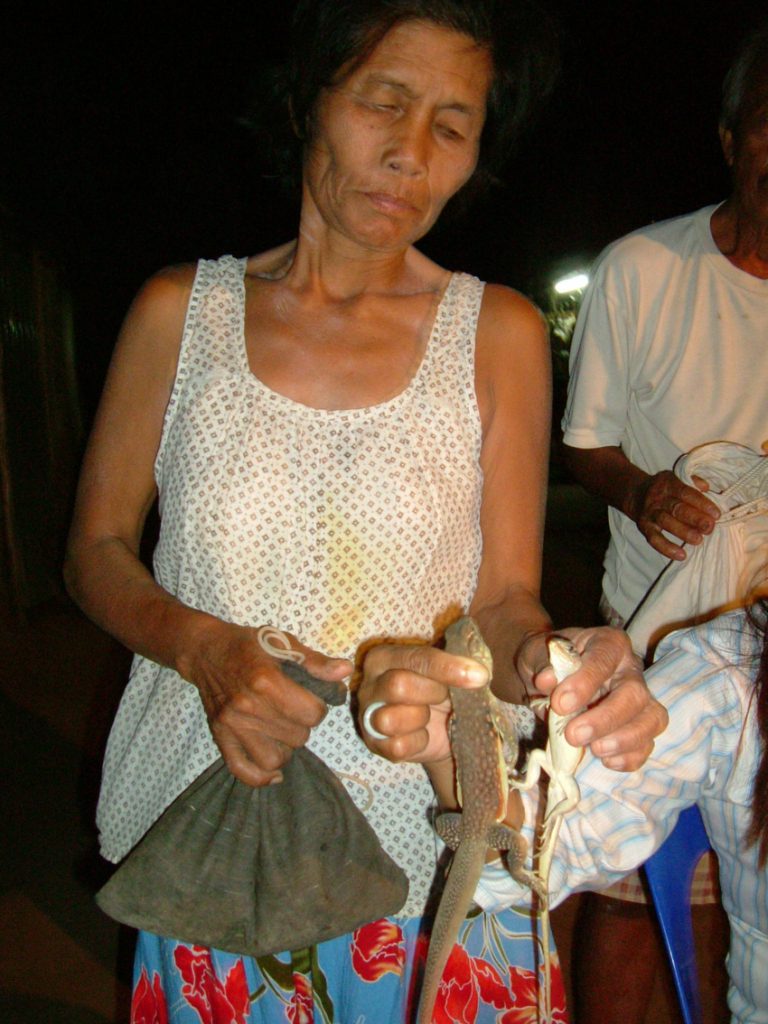
The local lizard vendor dropped by for dinner with a sack of scaly treats.
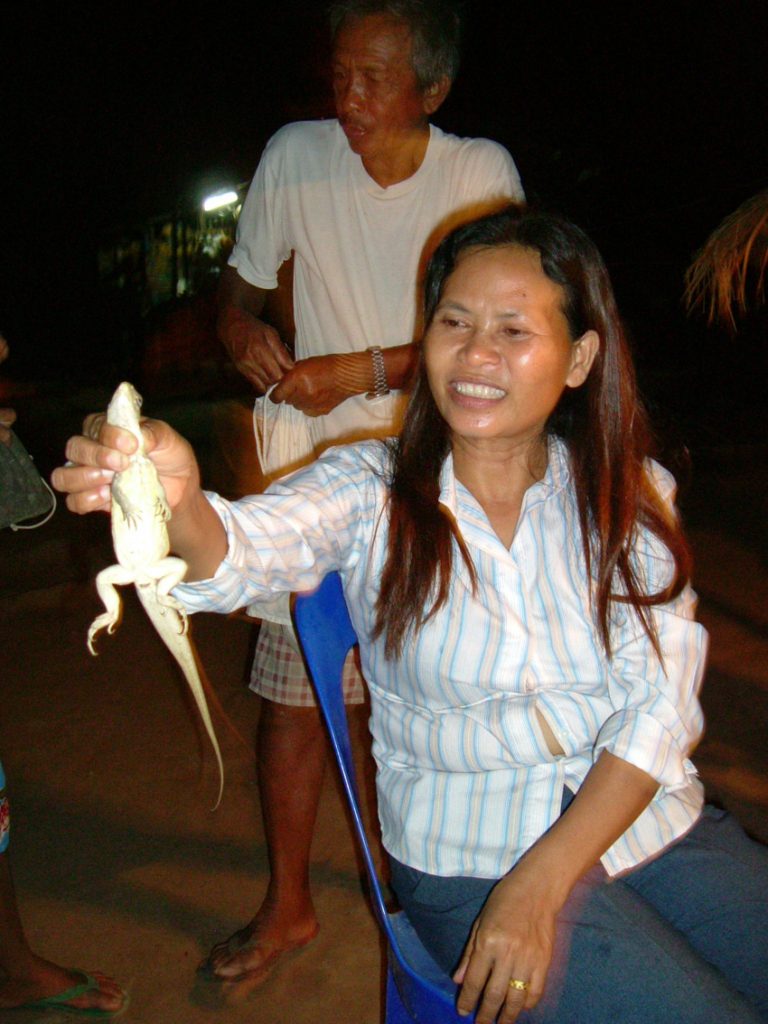
Who wants lizard?
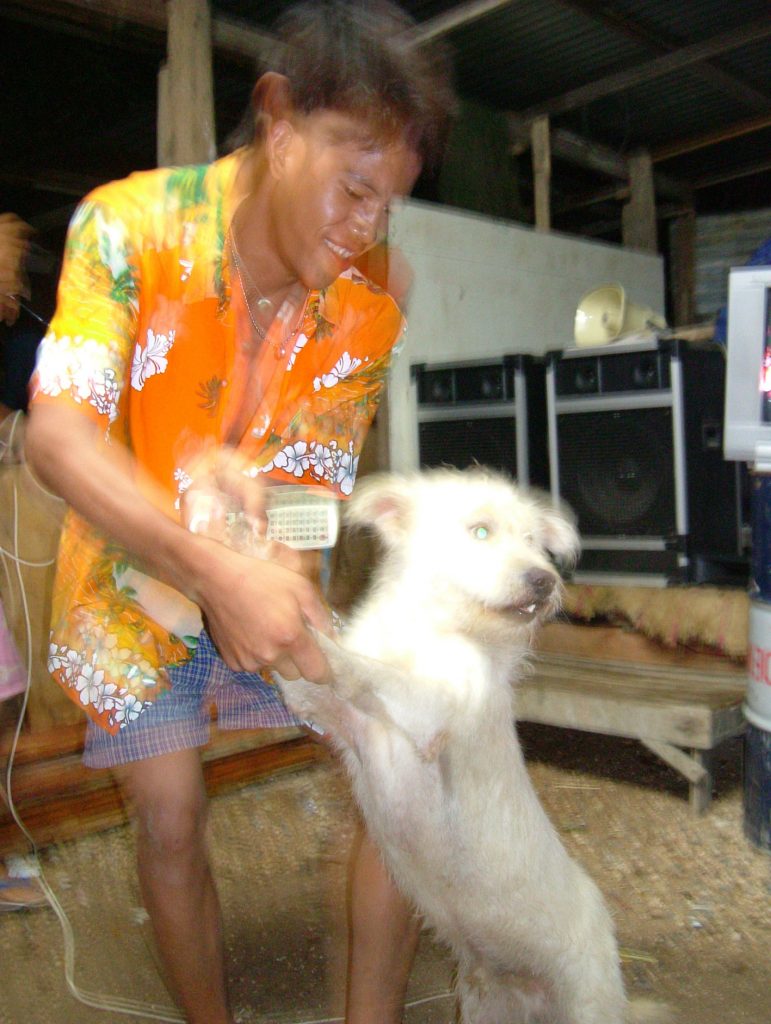
Doing the dog for Thai New Year
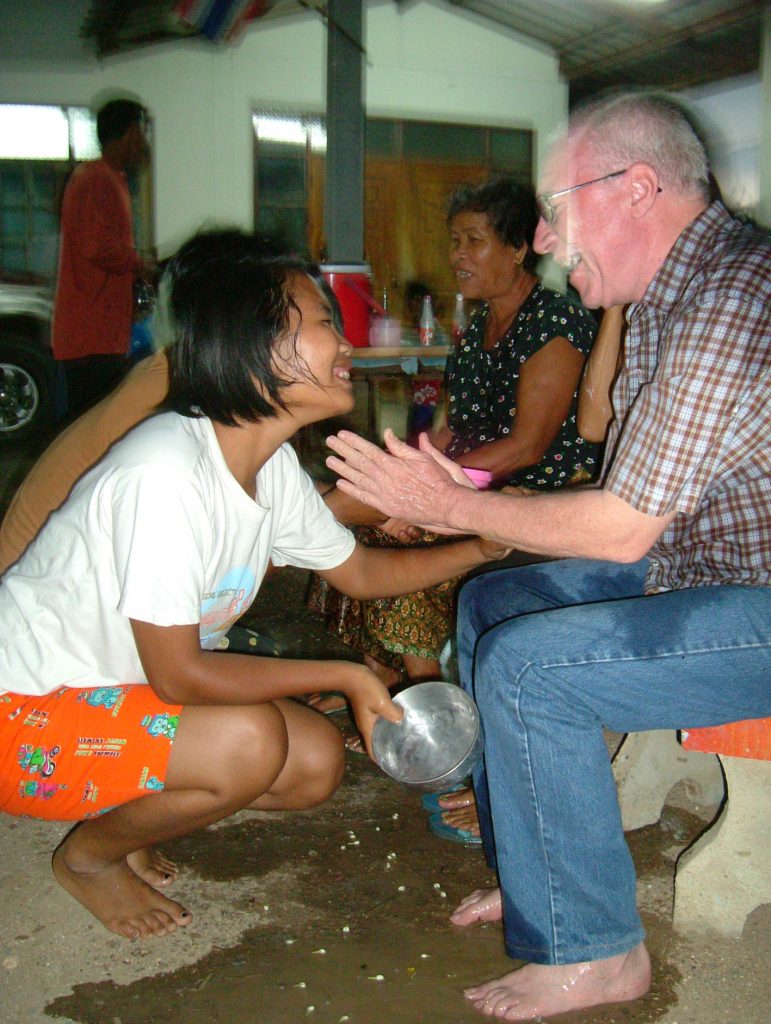
A young relative pours water over the hands of the late Keith Hardy, who worked in the publishing business in Southeast Asia for decades. .
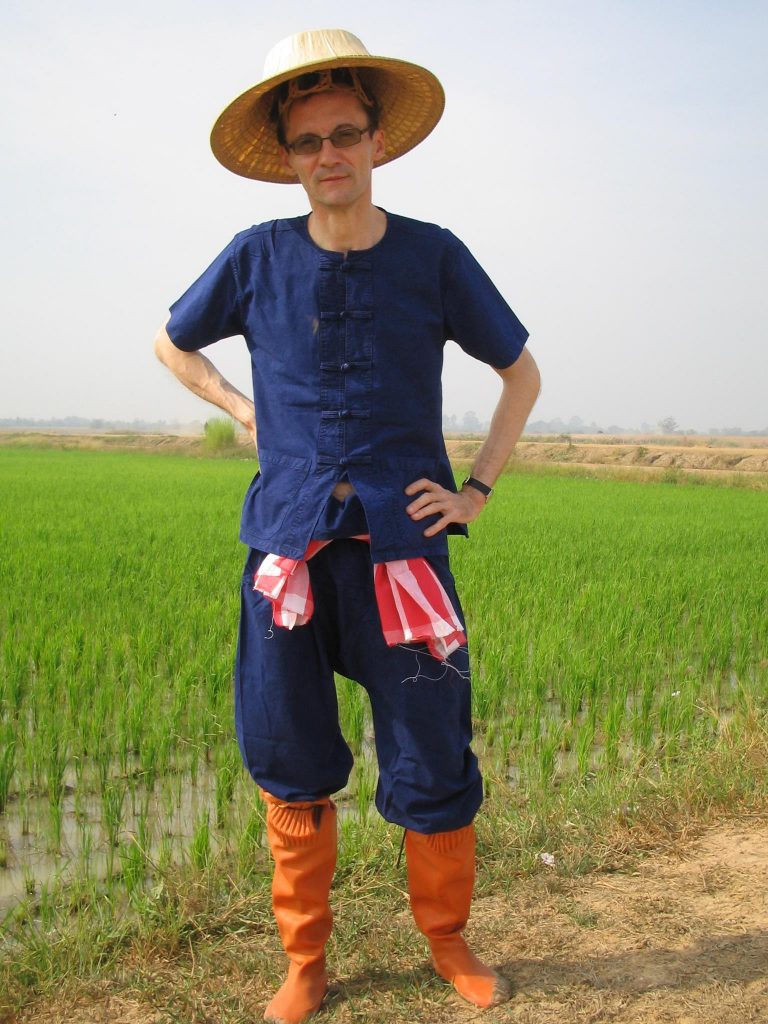
Author Jim Algie reincarnated as a rice farmer.
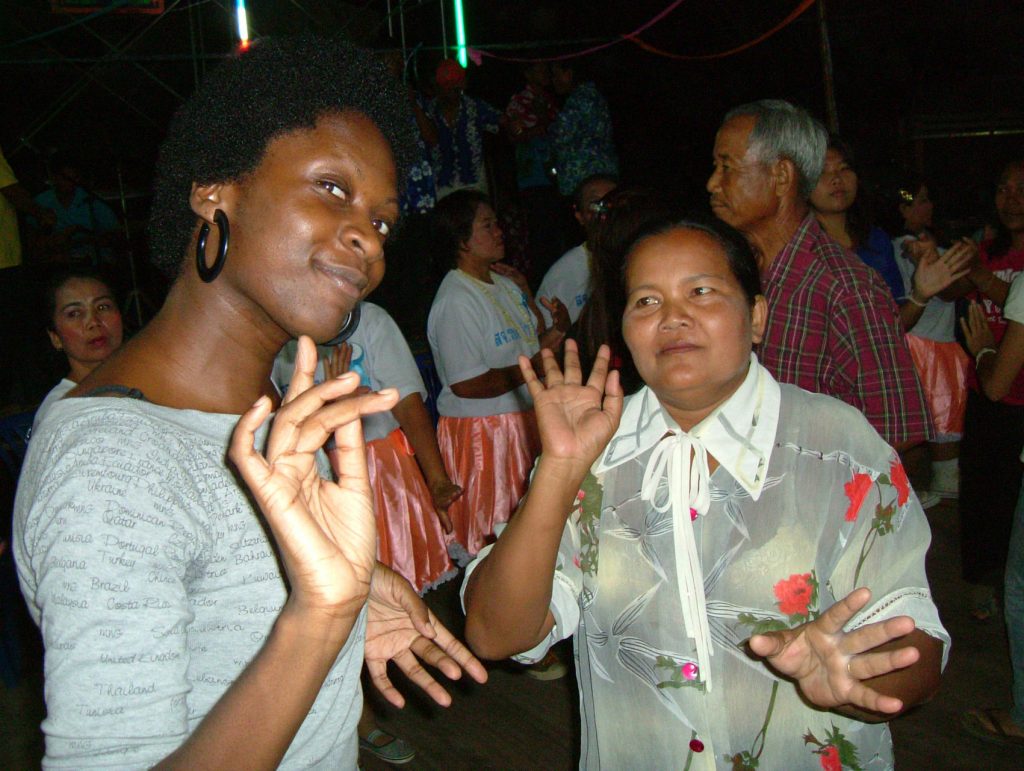
Cass and company doing the Thai New Year boogie at a temple fair.
Jim Algie’s books like “Bizarre Thailand: Tales of Crime, Sex and Black Magic,” and “The Phantom Lover and Other Thrilling Tales of Thailand” are available from Amazon. So is his new book, which delves into rock and punk history, drugs, alcohol, groupies, rocking road tales, and the life of a falling rock star trying to stage a comeback in the book On the Night Joey Ramone Died: Tales of rock and punk from Bangkok, New York, Cambodia and Norway,available from Amazon as an ebook for US$2.99, and now in an expanded paperback edition that includes a 130-page nonfiction bonus section of “Rock Writings and Musical Memoirs,” including autobiographical pieces like “My Close Encounters with Rock Stars” (Joe Strummer, the Pixies, Pearl Jam, Soundgarden, Ice-T and Leonard Cohen, as well as “My Last Show and Worst Onstage Disaster” that chronicles the musician-turned-author’s near-death experience at a gig in Berlin. The paperback is available only from Amazon for US$12.99. while the ebooks goes for US$2.99.
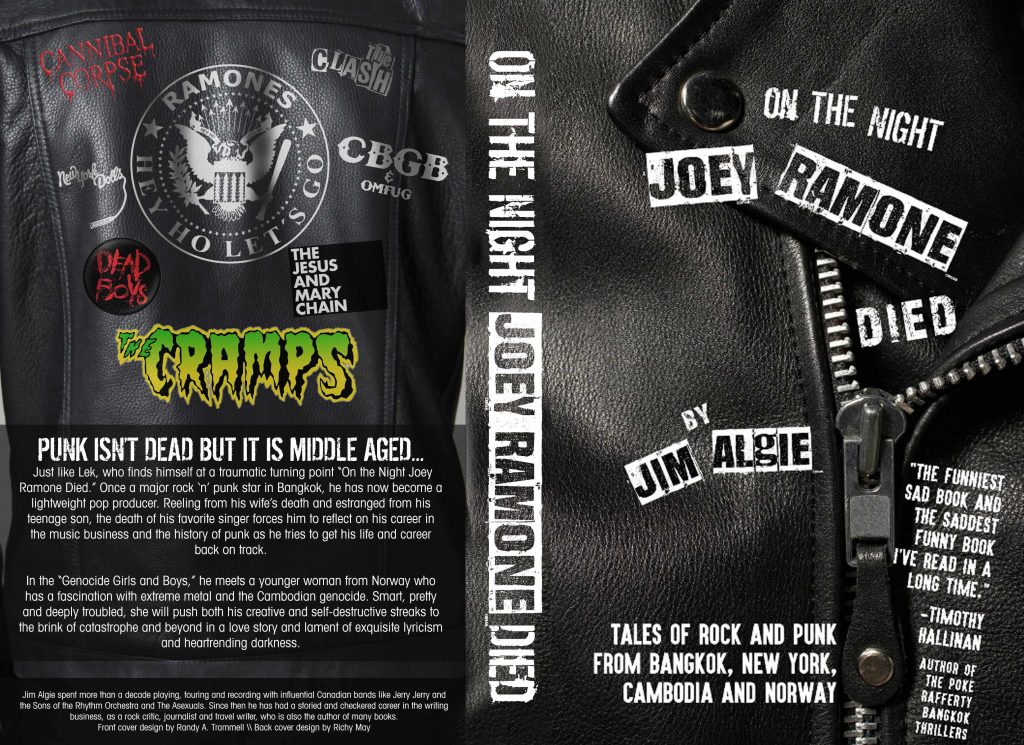

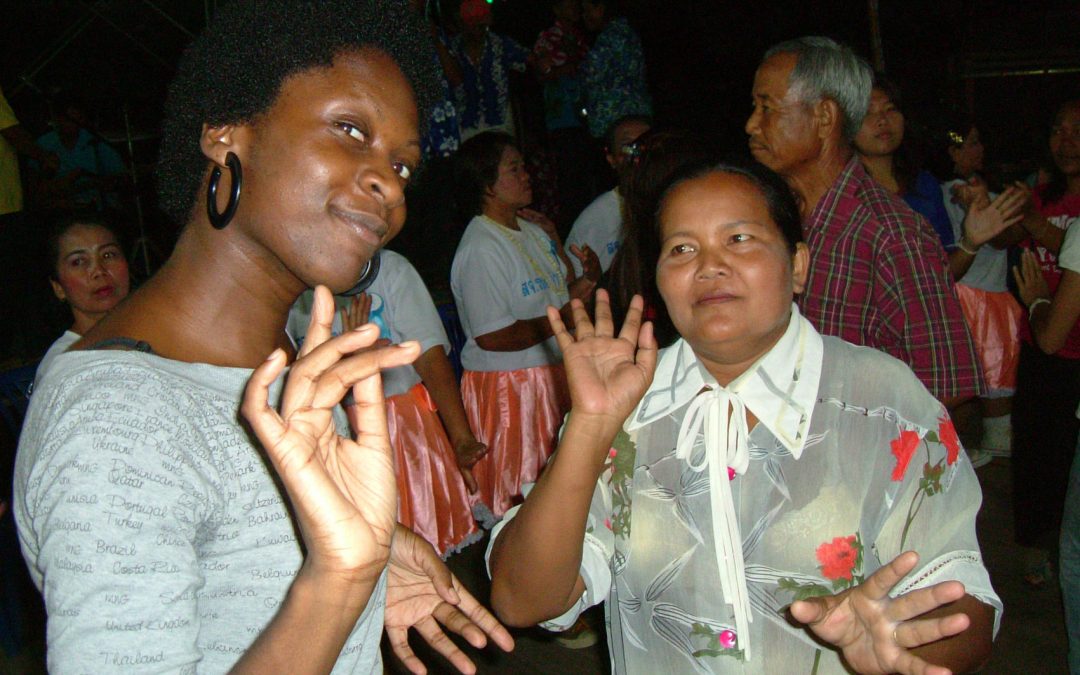
Page 102, the hated Hotel California, loving this book!
Thanks, David.
Jim Algie the rice farmer, what a wonderful picture of a former punk rocker for the city.
🙂